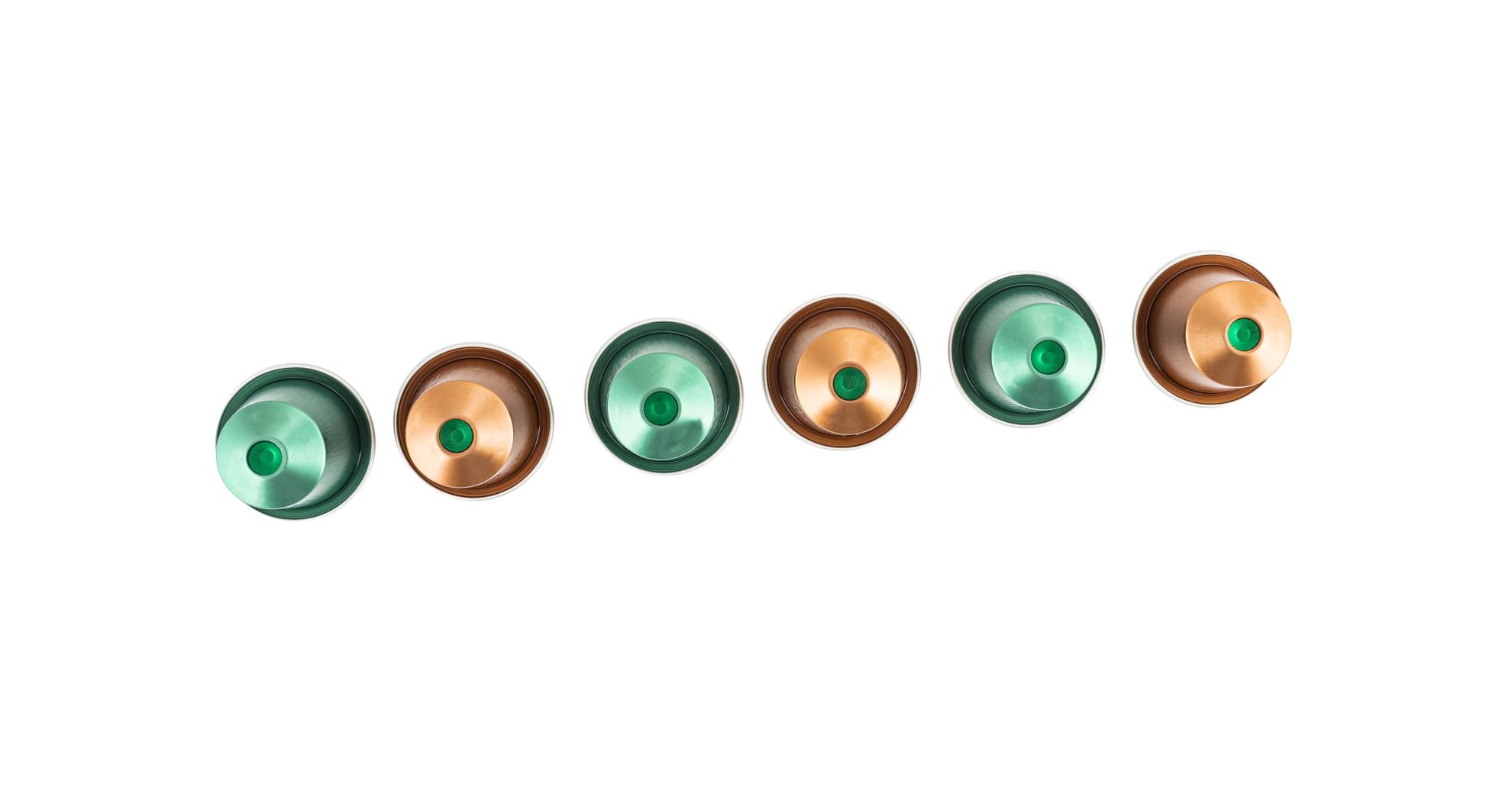Espresso Coffee vs Espresso Coffee Pods
Posted by Andrew Scrivens on 6th Nov 2019
We enjoy a life that’s easy and efficient as much as the next person.
Anything that allows us a few extra hits on the snooze button in the morning has to be a good thing, right?
Which is why we can appreciate the appeal and popularity of espresso coffee pods and their accompanying machines. With their simple functionality, everyone can get behind popping a pod in one, hitting a button and waiting for their brew to be fully automated while they still rub the sleep from their eyes.
But how exactly are these pods made and how do you know if what you’re getting is of high quality? And more importantly, are they anywhere near as good as a freshly brewed espresso?
We think we can all make safe assumptions on the answer to that last question but for the sake of the blog, let’s take a further look.
FIRST THINGS FIRST: WHAT ARE ESPRESSO COFFEE PODS?
You’ve probably seen these guys doing the rounds on the home-brewing coffee circuit.
Essentially, they’re little pods containing ground coffee wrapped in (hopefully recyclable) plastic with a little foil lid. Once placed in the appropriate espresso machine, they result in a pour of coffee.
Each single-use pod contains around 5-7 grams of coffee. They come in a variety of roasts, flavours, and different pods are designed to produce different pours: from the standard 40ml espresso to a much longer 110ml Lungo (long pour).
Nespresso is probably the biggest name-brand you’ll see offering a huge variety of different pods, but there are lots of others out there, including many standard supermarket brands.

WHAT’S THE CAFFEINE CONTENT LIKE?
Many of these styles of pods also contain flavour enhancers to create a ‘stronger’ flavour so it can be difficult to knuckle down on the exact extent of the caffeine content.
The average amount of coffee in these pods is 5 grams (give or take) which equates to around 66mg of caffeine per pour. The Lungo is a longer pour and contains on average 6 grams of coffee, so has slightly higher caffeine content, but only marginally at around 80mg.
As with all coffee, there are a number of factors at play that impacts the caffeine content including:
- The amount of coffee (as evidenced in the example above)
- The type of bean (espresso coffee pods are available with different coffee beans)
- The type of roast
We know what you’re wondering. How does all this compare to a freshly brewed espresso? Again, just looking at averages, a fresh espresso uses around 7 grams of beans, with an average caffeine content of 75mg.
HOW FRESH IS THE COFFEE IN ESPRESSO COFFEE PODS?
Although you might see a lot of marketing around the fresh taste that can be experienced from a range of espresso coffee pods, let’s be real. These are pre-packaged capsules of ground coffee. That’s freshly ground beans that then goes through a whole other layer of manufacturing before they even make it to the shelves or your kitchen cupboard.
Many mainstream retailers of these products are pretty reluctant to share their roast dates, and with some advertising that their pods have a shelf life of up to 12 months, it kind of leaves us questioning the freshness you’ll get out them.
HOW DO THEY COMPARE TO FRESHLY BREWED ESPRESSO?
We chatted about the importance of freshness – and finding the sweet spot of freshness when it comes to your beans – in a previous blog post.
Just to refresh (pun intended) it’s generally recommended that beans are at their very best around 15 days after roasting. Up to 30 days, you’re still getting a pretty good quality flavour, but anything after that is considered ‘stale’.
Still usable? Yes.
Fine to drink? Sure.
But fresh? Not so much.
So, you can see why when it comes to comparing the pods with a freshly brewed espresso, there really is no competition. Obviously, an espresso you’ve taken the time and care over-preparing is going to offer you all the optimum flavours, aromas, and deliciousness those beans have to give.
So, Which is Better?
We’re always reluctant to boldly state that one is better than the other. Instead, we put together a quick little pros list:
Espresso Coffee Pods
- Zero prep required
- Good range of flavours
- Quick and easy
Freshly Brewed Espresso
- It’s Better
- It’s just better…
- If you can get it, do it. It’s worth it
Now that we’ve cleared that up …
Of course, we know there are a whole host of factors that go into these types of decisions. Espresso coffee pods are quick, easy, and do the lion’s share of the coffee brewing work for you in the morning. If you’re time-poor and after an easy win first thing, then there’s nothing wrong with reaching for these (although please do consider the planet and make sure you recycle the leftover plastic responsibly!).
If flavour, taste, and optimum freshness is more your thing (we’re assuming if you’re here reading our blog you might be a bit into all that) and you don’t mind setting that alarm a bit earlier, than investing in the right beans is going to set you up very nicely.
If you haven’t already, we highly recommend heading over and checking out our Coffee Quiz to help you on your way to finding the perfect beans.
